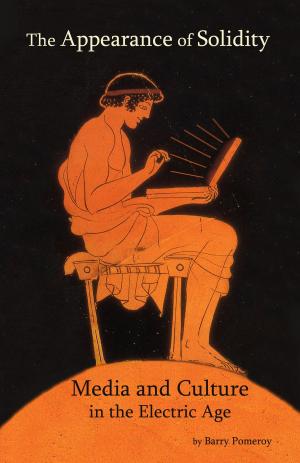H. G. Wells’ The Island of Doctor Moreau Annotated with an Introduction by Barry Pomeroy, PhD
Fiction & Literature, Literary Theory & Criticism, Science Fiction, Science Fiction & Fantasy| Author: | Barry Pomeroy | ISBN: | 9781987922561 |
| Publisher: | Barry Pomeroy | Publication: | February 10, 2018 |
| Imprint: | Smashwords Edition | Language: | English |
| Author: | Barry Pomeroy |
| ISBN: | 9781987922561 |
| Publisher: | Barry Pomeroy |
| Publication: | February 10, 2018 |
| Imprint: | Smashwords Edition |
| Language: | English |
This annotated edition of H. G. Wells’ second novel, The Island of Doctor Moreau, is meant to encourage the pursuits of scholars who are either encountering Wells’ influential classic for the first time or are returning to it in order to delve more deeply into its antecedents and influences. In the novel, Prendick, an aimless gentleman naturalist, becomes shipwrecked on the island where Moreau is creating bestial humans by a cruel and scientifically questionable application of vivisection and transfusions. Like Prendick, we ask, “What could it all mean? A locked enclosure on a lonely island, a notorious vivisector, and these crippled and distorted men?” but the answer is as baffling and ambiguous as the beast folk that Moreau creates.
The novel was seen as ghastly and indecent when it was published, but even in these times of internet schadenfreude, Moreau is still viewed as a shockingly vivid classic which probes the unsettling questions of human experimentation, gender and medicine, colonization, and the porous line that separates us from non-human animals.
My reading presents the novel through the lens of its critical background, as well as the scholarly work on its various themes of cruelty and exploitation. In order to trace the antecedents of the text, I include an introduction to Herbert George Wells and his work, the novel’s critical background, and a discussion of the filmic attempts to bring his compelling and by times disturbing work to the big screen. The annotations of the novel are meant to explain those more cryptic or dated references in the work as well as allow the reader to trace the critical readings the text offers.
This annotated edition of H. G. Wells’ second novel, The Island of Doctor Moreau, is meant to encourage the pursuits of scholars who are either encountering Wells’ influential classic for the first time or are returning to it in order to delve more deeply into its antecedents and influences. In the novel, Prendick, an aimless gentleman naturalist, becomes shipwrecked on the island where Moreau is creating bestial humans by a cruel and scientifically questionable application of vivisection and transfusions. Like Prendick, we ask, “What could it all mean? A locked enclosure on a lonely island, a notorious vivisector, and these crippled and distorted men?” but the answer is as baffling and ambiguous as the beast folk that Moreau creates.
The novel was seen as ghastly and indecent when it was published, but even in these times of internet schadenfreude, Moreau is still viewed as a shockingly vivid classic which probes the unsettling questions of human experimentation, gender and medicine, colonization, and the porous line that separates us from non-human animals.
My reading presents the novel through the lens of its critical background, as well as the scholarly work on its various themes of cruelty and exploitation. In order to trace the antecedents of the text, I include an introduction to Herbert George Wells and his work, the novel’s critical background, and a discussion of the filmic attempts to bring his compelling and by times disturbing work to the big screen. The annotations of the novel are meant to explain those more cryptic or dated references in the work as well as allow the reader to trace the critical readings the text offers.















